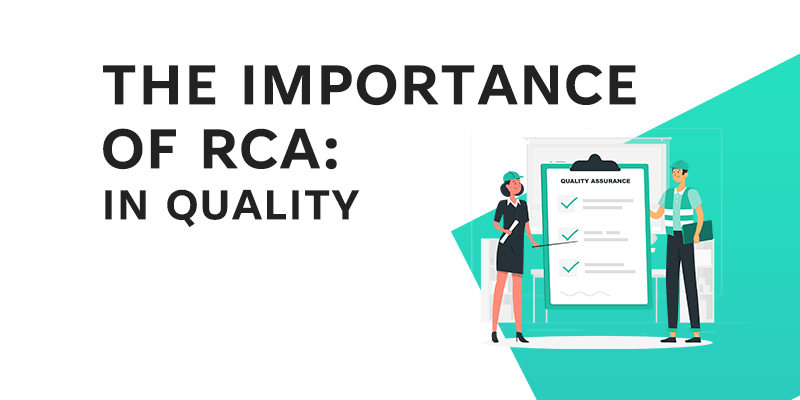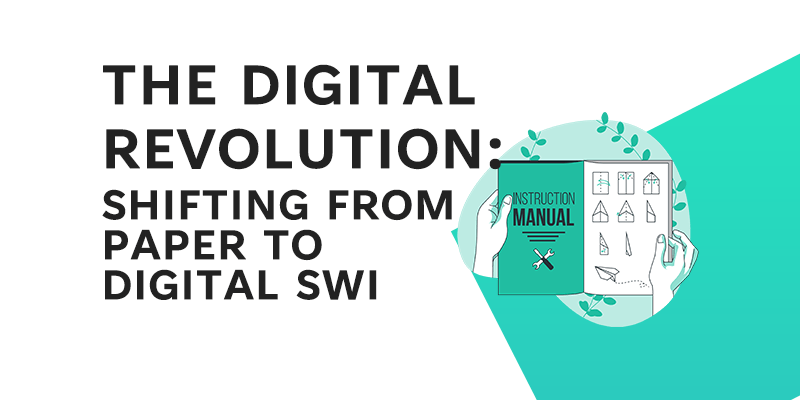Root Cause Analysis (RCA) is a powerful quality management methodology that assists organizations in identifying the root causes of problems and implementing effective solutions. Understanding the root causes of problems is critical in the pursuit of high-quality products, services, and processes.
RCA is a problem-solving technique that identifies and addresses the underlying causes of problems or failures in a system or process. It looks beyond the surface-level symptoms to find the underlying causes of problems or quality issues. Understanding the underlying causes allows organizations to implement targeted corrective actions and preventive measures, resulting in more effective and long-term quality improvement.
Table of Contents
Importance of Improving Quality
Across industries, quality improvement is a critical component of organizational success. It entails systematic efforts to improve products, services, processes, and outcomes, with the ultimate goal of increasing customer satisfaction, improving operational efficiency, and gaining a competitive advantage in the market. Quality improvement initiatives seek to identify and eliminate sources of variation, defects, errors, and inefficiencies in order to provide customers with consistent and superior results.
To meet customer expectations, stay ahead of the competition, and maintain long-term success in today’s highly competitive business landscape, organizations must constantly strive for quality improvement. Organizations can establish a reputation for dependability, trustworthiness, and customer-centricity by consistently improving the quality of their offerings and operations.
RCA is critical to quality improvement because it allows organizations to go beyond symptom management and address the root causes of quality issues. It offers a structured approach to problem-solving, guiding organizations in identifying the key factors contributing to problems and taking targeted actions to resolve them. The importance of RCA lies in its ability to drive long-term quality improvement, mitigate risks, optimize processes, and foster an organizational culture of continuous learning and improvement.
RCA in Quality Improvement
RCA is critical in quality improvement because it assists organizations in moving beyond surface-level symptoms and identifying the root causes of quality issues. It goes beyond simply addressing the immediate issues and attempts to comprehend the underlying factors that contribute to those issues. Organizations can develop targeted and effective solutions that address the source of the problem, resulting in long-term improvements by identifying the root causes.
RCA is a methodical approach that entails repeatedly asking “why” to trace the cause-and-effect relationships that lead to a specific problem. Rather than settling for superficial explanations, it seeks to identify the root cause. Organizations can implement corrective actions that directly address the root cause of the problem, eliminating or mitigating its impact, by understanding the underlying causes.
Linking RCA to effective quality improvement strategies
The RCA serves as the foundation for the development of comprehensive quality improvement strategies. Organizations can develop more effective and long-lasting solutions by identifying and addressing the root causes. While treating symptoms or applying quick fixes may provide temporary relief, the issues are likely to resurface unless the underlying causes are addressed.
RCA enables organizations to gain a comprehensive understanding of the factors that influence quality issues. It aids in the discovery of hidden process inefficiencies, insufficient training or procedures, equipment failures, and other systemic factors that contribute to poor quality. Addressing these root causes allows organizations to make changes that benefit the entire system, resulting in higher-quality outcomes and more efficient processes.
Benefits of implementing RCA in quality improvement processes
Using RCA in quality improvement processes provides numerous advantages to organizations:
- RCA assists organizations in developing effective preventive measures that reduce the likelihood of similar issues occurring in the future by addressing the root causes. This leads to higher quality and fewer operational disruptions.
- RCA enables organizations to proactively identify and mitigate risks, preventing costly errors or failures that could result in financial losses, customer dissatisfaction, or reputational damage.
- RCA encourages organizations to adopt a learning and improvement mindset. It promotes the notion that every problem represents an opportunity for growth and enables organizations to continuously improve their processes, products, and services.
- Organizations can improve stakeholder satisfaction, including customers, employees, and business partners, by effectively addressing root causes and improving quality. Satisfied stakeholders are more likely to be loyal, which leads to increased customer retention and business opportunities.
RCA assists organizations in allocating resources more effectively by focusing on areas that have the greatest impact on quality improvement. Organizations can optimize efficiency and cost-effectiveness by understanding the root causes and investing resources in targeted solutions rather than applying blanket fixes.
Organizations can proactively address issues, improve overall quality performance, and establish a culture of continuous improvement by incorporating RCA as a fundamental practice within quality improvement processes. RCA’s systematic and targeted nature contributes to long-term success and allows organizations to thrive in an increasingly competitive environment.
Key Steps in Conducting RCA for Quality Improvement
Step 1: Problem identification and description
The first step in conducting RCA for quality improvement is identifying and describing the problem. This entails outlining the problem, its impact on quality, and the desired outcome. It is critical to accurately define the problem in order to maintain focus and alignment throughout the RCA process. A well-defined problem statement gives the investigation a clear direction and helps stakeholders understand the objectives and expected results.
Step 2: Data collection and analysis
Gathering relevant data and conducting thorough analysis are essential for effective RCA. This step entails gathering information from a variety of sources, including customer feedback, process metrics, quality records, and observations. The information should be accurate, complete, and representative of the problem under investigation. Analyzing data with appropriate statistical and analytical tools aids in the identification of patterns, trends, and potential causes. This analysis sheds light on the problem and lays the groundwork for subsequent steps.
Step 3: Identifying possible causes
The goal of this step is to generate a comprehensive list of potential causes related to the identified problem. To stimulate creative thinking and explore different dimensions and perspectives, techniques such as brainstorming, cause-and-effect (Fishbone) diagrams, and process mapping are commonly used. The goal is to identify as many possible causes as possible, taking into account factors such as equipment, processes, human factors, training, communication, and environmental conditions. A collaborative approach that includes cross-functional teams can yield diverse insights and ensure a thorough investigation of causes.
Step 4: Evaluating and prioritizing causes
Once potential causes have been identified, they must be evaluated and prioritized based on evidence and impact. Evaluation entails delving deeper into the potential causes, gathering additional data as needed, and determining their likelihood of contributing to the problem. Prioritization is necessary for effective resource allocation. When determining the significance of each cause, factors such as frequency of occurrence, severity of impact, detectability, and feasibility of corrective actions should be considered. The goal is to identify the most serious issues that require immediate attention and action.
Step 5: Developing and implementing corrective actions
The final step in quality improvement with RCA is to develop and implement corrective actions. Based on the identified causes, actionable and preventive measures are developed. Corrective actions target specific root causes and seek to eliminate or reduce their impact. The actions should be feasible, realistic, and measurable. To ensure their commitment and support, it is critical to include relevant stakeholders in the action planning process. Once the actions have been defined, they must be carried out, monitored, and evaluated for effectiveness. Periodic reviews and follow-ups aid in assessing progress and making necessary adjustments.
Organizations can effectively conduct RCA for quality improvement by following these key steps. The systematic and structured approach ensures that the problem is thoroughly understood, that underlying causes are identified, and that targeted solutions are implemented. RCA enables a proactive and data-driven approach to quality improvement, resulting in long-term results and continuous improvement of products, processes, and customer satisfaction.
Challenges and Best Practices in Implementing RCA for Quality Improvement
Implementing RCA for quality improvement may face opposition from employees or departments who are content with the status quo or unwilling to embrace change. To overcome this challenge, effective change management strategies, clear communication of the benefits of RCA, and the creation of a supportive organizational culture that encourages continuous improvement are required. Employee engagement, training and education, and involvement in the RCA process can help reduce resistance and foster a sense of ownership and commitment.
Ensuring cross-functional collaboration and involvement
RCA for quality improvement frequently necessitates collaboration and participation from multiple departments and stakeholders. Organizational silos and a lack of communication, on the other hand, can stymie effective collaboration. To address this issue, organizations should encourage cross-functional teams, clear communication channels, and knowledge sharing and cooperation. Involving representatives from various areas in the RCA process ensures diverse perspectives, a thorough understanding of the problem, and greater buy-in for the proposed solutions.
Collecting and analyzing relevant data effectively
Accurate and relevant data is critical for RCA. However, organizations may face difficulties in gathering the necessary data as well as ensuring its quality and integrity. To overcome this obstacle, it is critical to establish clear data collection processes and standards. Invest in appropriate data collection methods and technologies, train employees in data collection techniques, and ensure data accuracy through periodic audits and validation. Furthermore, leveraging data analytics tools and techniques can aid in effectively analyzing and interpreting data, resulting in meaningful insights for RCA.
Training and developing RCA competencies within the organization
Individuals with the necessary skills and competencies in problem-solving, data analysis, and RCA methodologies are required to conduct effective RCA. Organizations may have difficulty finding employees with RCA expertise or providing adequate training and development opportunities for current employees. Organizations should invest in training programs that focus on RCA methodologies, tools, and techniques to address this challenge. Internal experts can be identified and developed into RCA champions who support and mentor others in conducting RCA. Organizations can ensure a sustainable and proficient RCA capability within the organization by fostering a learning and development culture.
Adhering to best practices can further enhance the implementation of RCA for quality improvement:
- Define roles, responsibilities, and accountability for RCA activities clearly.
- Encourage open communication and learning from mistakes in a blame-free environment.
- To facilitate knowledge sharing and organizational learning, document RCA processes, lessons learned, and best practices.
- Review and evaluate the effectiveness of RCA initiatives on a regular basis, making adjustments as needed.
- Integrate RCA into the organization’s quality management systems and performance metrics to promote continuous improvement.
Organizations can overcome barriers and create a conducive environment for successful RCA implementation in quality improvement efforts by addressing challenges and implementing best practices. This ensures the growth of RCA competencies, effective collaboration, data-driven decision-making, and long-term quality improvements across the organization.
Conclusion
Root Cause Analysis (RCA) is a powerful tool for quality improvement that allows organizations to address the underlying causes of problems and drive long-term change. Organizations can move beyond treating symptoms and focus on comprehensive solutions by implementing RCA. We looked at the key steps in conducting RCA, emphasizing the importance of problem identification, data collection and analysis, determining the root cause, and developing targeted corrective actions. We also discussed the challenges of implementing RCA and best practices for overcoming them. Organizations can foster a culture of continuous improvement, optimize resource allocation, and achieve long-term success in quality improvement efforts by embracing RCA.








